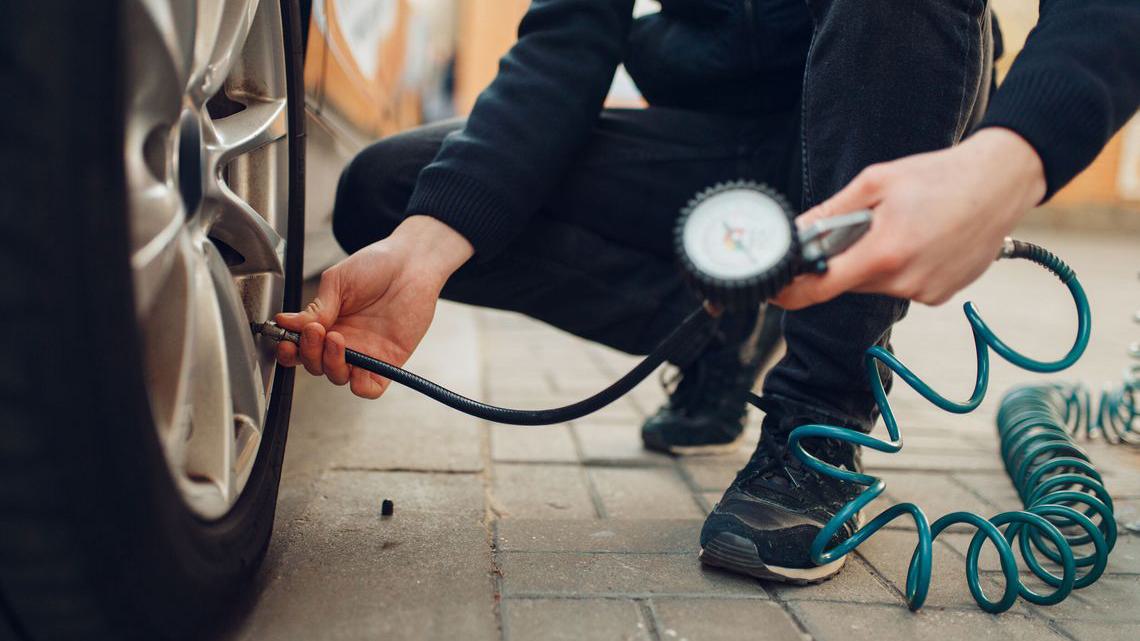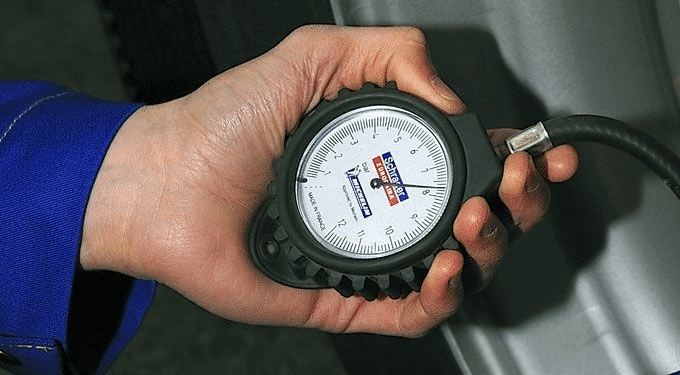What are the risks when your tyres are not properly inflated?
If your tyres are underinflated
- They increase fuel consumption
- They wear out faster and more irregularly. The life of a tyre underinflated by 20% can be reduced by 20%. Example: for a potential mileage of 25,000 miles, your tyre could last 5,000 miles less.
- Road handling is hazardous and they generate heating effects which can, at high speed, go as far as bursting the tyre.
- Also, they increase CO₂ emissions.
If your tyres are overinflated
- Their lifetime is reduced due to accelerated wear in the central part of the tread
- Road handling is hazardous, especially on wet roads.
When should you check your tyre pressure?
A tyre naturally loses air : usually around 0.1 bar per month (1.45 PSI).
This phenomenon can also be accelerated by other sources of leakage due to:
● an accidental puncture
● a defective valve: it must be replaced each time the tyre is changed (including valves with pressure sensor)
● the absence of a valve cap: it is essential to guarantee a good seal
● the condition of the rim: it must be cleaned each time a tyre is fitted
That is why we recommend checking your tyre pressure once a month and before a long car trip.
You can find more information about the causes of pressure loss in this article.
If you do not use your tyres for a long time, for example if you change your tyres twice a year to alternate summer/winter tyres, it is essential to check the pressure when refitting them on your car.
A properly inflated tyre is safer, more economical and more eco-friendly!

How to inflate tyres in 3 steps?
Step 1: Find the recommended pressure for your tyres
Do not look for the recommended pressure on the sidewalls of your tyres, it is not there!
You will usually find the recommended pressure:
- On a sticker on the driver's door pillar or on the back of the fuel filler flap
- In the vehicle user guide generally placed in the glove compartment
- You can also use our pressure calculator
Step 2: Check your tyre pressure
- Go to a tyre inflation pump in a petrol station
- Insert the inflator's mouthpiece into the valve on your tyre
- The manometer (tyre inflation gauge) displays the internal pressure in bars or PSI
- The hiss you hear is issued by the air escaping from the tyre. This should not seriously affect your tyre pressure.
Step 3: Adjust your tyre pressure
- Compare the displayed pressure on the tyre inflation gauge with the recommendation of your vehicle manufacturer
- If it is above the recommended pressure, release air to reach the desired level
- If it is lower than the recommendation, inflate tyres to the recommended level.
How to inflate tyres when they are cold or warm?
- Check the pressure preferably when the tyres are cold (your car should not have been used in the last 2 hours or should have traveled less than 2 miles at low speed)
- If, however, the pressure is checked while the tyres are warm, add 0.3 bar (4.35 PSI) to the pressure recommended by the vehicle manufacturer. The pressure should then be checked and readjusted when the tyres are cold.
- Never deflate a warm tyre (pressure increases with temperature).
Should the pressure of the spare wheel also be checked?
Since a tyre naturally loses air, it is of course necessary to check your spare tyre as well. However, since this tyre is not used every day, you can do it only once or twice a year.
The importance of a calibrated tyre inflation gauge
Be careful if you use an tyre inflator in a petrol station: their tyre inflation gauge is not always calibrated, hence not always reliable.
For this reason, it is important:
- to have the pressure checked occasionally by a professional
- or to check the tyre pressure yourself with a calibrated pressure gauge (you can find them in specialized stores)

The portable tyre inflation compressor : an alternative to petrol stations
A portable air compressor is an accessory that sends compressed air into your tyre. Depending on the model, it plugs into the cigarette lighter socket or into a power socket. Its built-in pressure gauge allows you to ensure the correct pressure in your tyres.
Where can you find a portable tyre inflation compressor?
You can find a portable compressor in automotive accessory stores and some supermarkets.
Should you inflate tyres with nitrogen?
What is nitrogen?
Nitrogen is air from which oxygen has been removed. About 79% of the air is nitrogen.
How is nitrogen used?
During assembly, the tyres are mostly inflated with compressed air. But some professionals may propose exclusively nitrogen-based inflation.
Most tyres can be inflated with air or nitrogen, as long as the pressure recommended by the car manufacturer is observed.
Nitrogen and compressed air can mix very well (when adding pressure, for example).
Benefits of nitrogen
When nitrogen is substituted for oxygen, your tyres lose less air and stay longer at the desired pressure.
Check your tyre pressure, even when your tyres are inflated with nitrogen
Unfortunately, there are other possible sources of leaks (tyre/rim contact area, valve, valve/rim junction, etc.), and neither air nor nitrogen can keep the correct pressure indefinitely. Be sure to check your tyre pressure at least once a month and before a long trip.
Where to inflate tyres with nitrogen?
There are no petrol stations where you can inflate tyres with nitrogen. This service is chargeable and generally offered by tyre professionals, garages or dealers. Euromaster network across Europe, for example, offers this kind of service.
What is the use of the tyre valve?
- It keeps the tyre pressure at the recommended level
- It prevents moisture from entering into the tyre
- The cap plays an essential role in preventing dust from clogging the valve, and ensures its tightness. We recommend that you use good quality caps.




